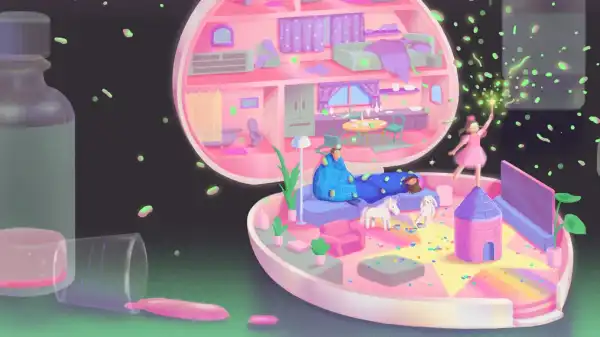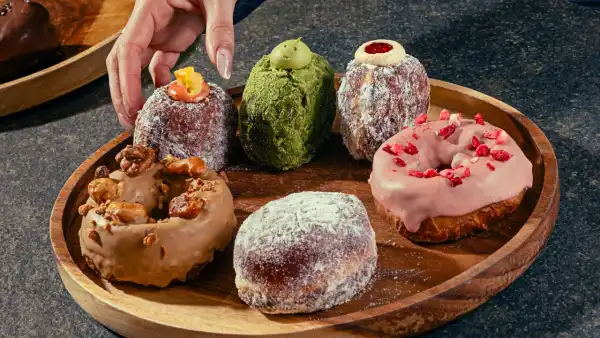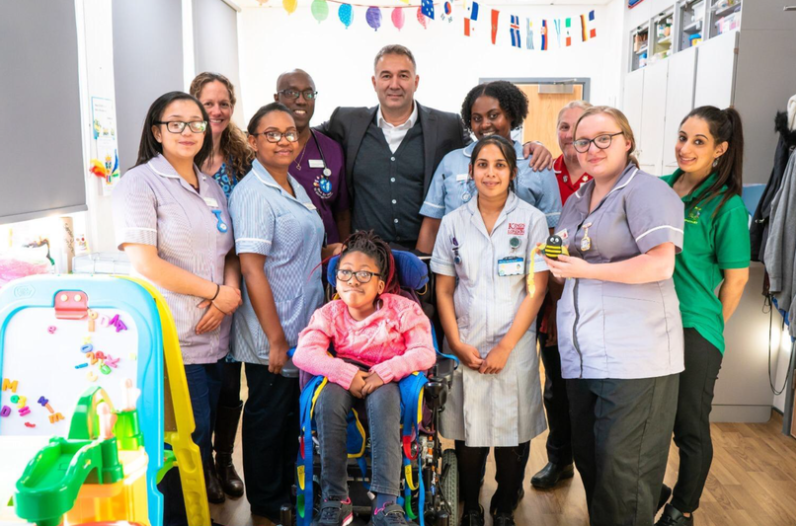
Save this storySave this storySave this storySave this story
Last September, my then three-year-old daughter started kindergarten for the first time, wearing a ladybug shirt, bright red pants, and that special, beaming, dimpled smile she usually reserves for her joyful entrance into our bedroom at seven-thirty in the morning. Like any parent, I was a little moved to tears, and incredibly proud. How meaningful it was, this new stage of life; how wonderful it was to watch her begin to take root in the world. Or at least try to take root. Two hundred and one days had passed, and I had been sick for most of it.
These aren’t the things people talk about when they say “chronic illness.” In fact, there are no medical terms for all the ailments your beloved child will bring into your life. Think of the croup that turns your sweet-talking angel into an angry sea lion and forces you to spend four nights huddled next to her on the bathroom floor, the steam from the shower enveloping you like a manifestation of your chronic lack of sleep. Think of the norovirus that produces more bodily fluids than the Augean stables. Think of the multitude of illnesses linked to specific parts of your little one’s body: pink eye; strep throat; ear infections; hand, foot, and mouth disease. Think of the childhood versions of familiar diagnoses — bronchitis, pneumonia, the flu, COVID-19, RSV. Finally, consider the colds you will experience with a frequency, ferocity, and persistence unmatched since your own once-innocent immune system first encountered this fallen and pernicious world.
Before I go on, let me state the obvious: We parents who only encounter everyday illnesses, and only the non-life-threatening ones, are the lucky ones. Far more serious illnesses can strike the young, and I pray that I never have to experience the fear, anguish, and helplessness of watching them suffer. Like any mother, I would gladly take on every known natural disaster if it would spare my children pain. But my subject here is not those desolate, terrifying depths of parenthood. This is the utterly mundane world in which, for months on end, liquid Tylenol and Motrin are never far from your shopping list. This is the world in which you cancel visits to out-of-town relatives, romantic getaways, and Thanksgiving celebrations. This is the world where, during a brief, wonderful interlude of health, the sound of a single sneeze can fill you with dread. Not to mention weddings; “In sickness and in health” is what you are supposed to say when you have a baby.
In a twisted way, my partner and I were lucky to have our first child born in the middle of the coronavirus pandemic. Overall, it wasn’t the best timing. Trust me, you don’t want to go through pregnancy, labor, and early parenthood during a national emergency that makes all medical care burdensome and the supportive presence of family and friends an impossible dream. The isolation, the fear of infection, the disruption to routines to the point where it’s hard to imagine what life was like before: I can’t begin to tell you how many times my partner and I asked each other in those first months of our eldest’s life, “Is this parenting or is this a pandemic?”
Despite this, and although we didn’t realize it at the time, this global crisis also provided us with a personal ray of hope, bright as a mercury column resting peacefully at 98.6: until she was 15 months old, our daughter didn’t even have a runny nose. Over the next year and a half, as we entered the world of playdates and birthday parties, we congratulated ourselves on the fact that she seemed to have inherited my partner’s ironclad immune system: a fever here, a runny nose there, all cleared up in a day or two. Then came kindergarten.
As you know, if you have a child of your own, the collective noun for “toddler” is “super-spreader.” At any given moment, half of all children under the age of four are suffering from a horrible disease, while the other half are engaging in hygienically inappropriate behavior that amazes adults. Not to mention some mindless thumb-sucking or outright digging of hardened snot out of a stuffy nose; I’m talking about the evolutionarily inexplicable instinct to touch things that should never be touched and taste things that should never be tasted. The latter includes — to borrow examples from Reddit threads with titles like “What Has Your Toddler Licked Recently?” — shopping carts, toilet seats, shoe soles, a fly swatter covered in freshly squashed flies, and the floors of airports, gas stations, and hospital waiting rooms. Kids don’t stop at just licking, either. There are children alive and well today who have eaten dead cockroaches, cat vomit, raccoon poop, used bandages, and blood-soaked absorbent material from a package of raw chicken. I know one child who ate his baby sister's umbilical cord when it fell off.
Sourse: newyorker.com






